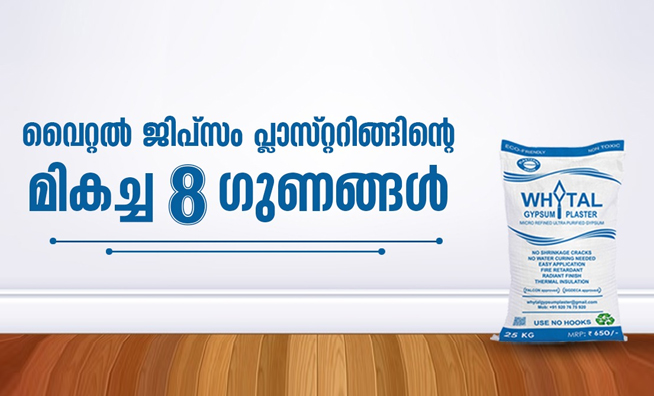Our Blogs

Whytal Tech Private Limited
Jun 10 | 2021
8 Advantages of Whytal Gypsum Plastering
Plastering the walls is necessary for a smooth room finish. The traditional sand cement plaster is still the most common form of plastering throughout the country, but the benefits that Whytal gypsum plastering offers over traditional sand cement plaster are causing gypsum plaster to gain popularity and usage. Here are the gypsum plastering advantages.
Reduce the cost of plastering by 30%
Due to the fact that cement plastering takes longer than gypsum plastering, it also needs more people. Whytal Gypsum plastering saves roughly 30% on overall building costs by lowering the cost of energy and putty.
Reduces construction time
Plastering using gypsum takes less time to dry than plastering with cement sand. In comparison to cement sand plastering, gypsum plastering walls are ready to paint in four days. Sand cement plastering takes at least 21 days to acquire its inherent qualities, but gypsum plastering takes only 48 hours to get its inherent features. Within 78 hours, gypsum plasters reach their full strength.
Cracks are no longer a problem
Shrinkage cracks emerge in the sand cement plaster after it has completely cured. The sand cement plastered wall is coated with putty to give it a smooth texture before it is ready to be painted. Gypsum plastering eliminates the possibility of cracks and dries to a fine surface that is smooth enough to paint on. When compared to cement reactions with water, the gypsum plaster reaction creates less heat. As a result, gypsum plaster has no cracks than typical cement plaster.
Reduce the weight of the plastering
The world’s top engineers and architects are attempting to reduce the deadweight of high-rise buildings in order to make them earthquake and wind-resistant. Gypsum has a low density and a high compressive strength, allowing it to be lighter while providing the strength required for load-bearing parts of a construction one of the best gypsum plastering advantages. Gypsum plays a critical part in this, and gypsum plastering is used in virtually all high-rise structures across the world.
Less consumption of Water
Sand cement plastering takes 7 days of water curing, but gypsum plastering does not. If a cement-plastered wall is not sprayed with water, it may dry up too quickly, resulting in fractures. Because gypsum plastering does not require water to cure, it uses less water makes whytal gypsum environment friendly.
Smooth and ultra finish
Sand cement plastering results in fissures, whereas gypsum plastering gives a smooth surface with perfectly leveled corners. Cement plastering, on the other hand, necessitates the use of putty, but gypsum plastered walls are ready to paint and do not require the use of putty. A whitewash may be needed to hide flaws in cement plastered walls. Painting or using wallpapers on gypsum plastering surfaces will give the best result.
Eco-friendly product
Because it takes more fuel to create the thermal energy needed for cement manufacture, the cement sector is responsible for 8% of worldwide greenhouse gas emissions. Gypsum is a mineral that forms as a result of natural occurrences. Whytal Gypsum Plaster is an IGBC certified product. 100% eco-friendly.
Ultimate Fire resistant
Whytal gypsum plaster is a fire-resistant and non-combustible substance, and gypsum, which contains water in its crystalline structure and resists fire and heat, is ideal for plastering your home. Gypsum plaster offers good insulation from heat, thus it saves electricity by keeping the space at a comfortable temperature.
Learn more about Gypsum Plastering

Whytal Tech Private Limited
Jul 05 | 2022
For a Perfect Plastering Material

Whytal Tech Private Limited
Nov 12 | 2022
Going Green with Eco-Friendly Whytal Gypsum Plaster

Whytal Tech Private Limited
Oct 18 | 2021
Whytal Gypsum Plaster For Beautiful Home Interior

Whytal Tech Private Limited
Sep 18 | 2021
Reduce Painting Cost with Gypsum plastering

Whytal Tech Private Limited
Jul 14 | 2021
Gypsum plaster offers better acoustics and how does it help hospitals and the Educational Institute?

Whytal Tech Private Limited
Aug 17 | 2021
How long does Gypsum Plastering last?
Terms of use | Privacy Policy | Contact us
© 2025 Whytaltech. All Rights Reserved